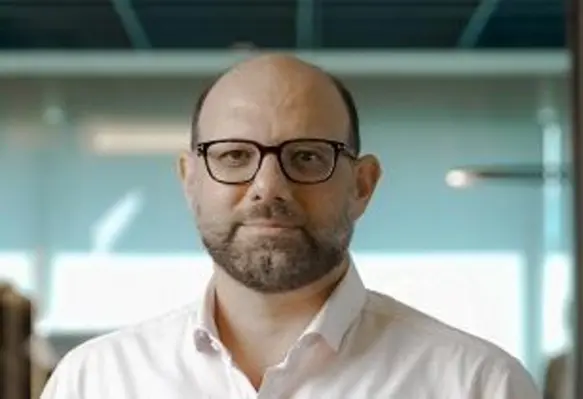Friedrich Portner, chief commercial officer, Maritime Cluster, AD Ports Group, discusses growth prospects and the company’s drive for optimisation
SAFEEN Group, part of AD Ports Group, is an industry leader in the provision of world-class integrated marine services, offering advanced marine services, merchant shipping, transshipment, offshore and subsea solutions for customers across the region and beyond. As such, it is the largest diversified provider of maritime services in the region and continues to expand its fleet of vessels as part of an ambitious growth plan to build capacity and enhance its portfolio of services.
Portner sees “fantastic prospects” overall for the Middle East, although the dynamics differ from sector to sector.
“The shipping industry is a bit more globally driven, but when we come to the offshore sector, the prospects are more Middle East centric,” he comments.
“We see amazing prospects in the pipeline, after some sluggishness in the market, whether it be with ADNOC, Aramco or QatarEnergy. A lot of mega projects are coming to fruition at the same time, from around 2023-2025, so we see a clear demand trend. At the same time, when we look at offshore, there is a clear decrease in the supply of available assets, creating a ‘scissor effect’. Before, we had more supply than demand; now it’s the opposite.
“We have been very active this year in purchasing assets in all sectors – in shipping, marine services, and especially now in offshore. This is driven by the prospects in the Middle East and the need to have access to assets in the region, because there will be a shortage. Clients are knocking on everyone’s door to secure the right assets, and we’ve been purchasing a multitude of these – offshore vessels, subsea vessels, barges - and we will continue doing that.”
One of its most recent acquisitions has been the ‘SAFEEN Surveyor’, a subsea multipurpose vessel, which will support subsea inspection, repair, and maintenance works.
Attractive value proposition
SAFEEN Group prides itself on its commitment to excellence and adherence to the highest operational standards, as well as providing efficient and cost-efficient services.
“Cost efficiency and service quality go hand in hand, driven by three or four factors,” says Portner.
“One is definitely scale; with scale you gain efficiency on the back of the overheads. Second, the right acquisition price. We started our acquisitions when prices were lower, and we’re continuing now that prices have gone up, but I still believe our cost structure, compared to others who have historically purchased at much higher prices, will create competitiveness.
“In terms of operational expenditure, I would highlight our integrated business model. It’s beneficial for us, and for the client. Beneficial for the client, because they have one entity who is accountable, reducing risk of interface losses and ensuring a certain quality, because that one entity is looking at the whole package. It’s also less bother for the client, as they can deal with a smaller team rather than having to manage several individuals.
"From our side, if we have a full end-to-to end package, we are responsible to optimise. It is difficult to do that if items are split, as you lose control over the full supply chain. For example, we can make sure that the arrival of a vessel can be integrated with our lifting operations. There are a number of factors which we can play with and optimise, so we have fewer losses as well. No waiting time, no wastage. This creates cost savings, which we can pass on to the client to a certain extent as well.
“Last but not least, in terms of our cost competitiveness, we’ve been very good at finding partners in different geographies. This joint venture/ partnership/ collaboration model helps us to better understand the markets and deliver better quality to the client.
“All of these elements are good on their own, but together they create a value proposition which is very attractive for both parties. We can optimise, and the client can optimise.”
The role of digital
Digital technology has a key role to play in the drive for optimisation.
“Management sees digital technology as one of its highest priorities, as illustrated by the fact that we have in AD Ports Group a dedicated digital division to help us augment,” explains Portner. “Just as we are optimising service delivery, this division is looking at how it can help us optimise the supply chain, creating dedicated and specialised tools for us. We have an in-house ability to develop our own Intellectual property and also to integrate it with third party intellectual property, coupled with our knowledge of the industry to enhance and deploy it.
“So, it creates digital momentum, and importantly we’ve just embarked on a new digital strategy for maritime, which shows how important it is in our day-to-day mindset. The aim of digital is two-fold: first, how can we optimise and create visibility and then take the right decisions. Secondly, how is this reflected in better efficiencies and better processes. We are trying to go one level above the digitalisation of day to day operations, basically creating or visualising the data we know, knowing what we know, to be able to curate this information and deduce from it the right management decisions.”
This has a positive impact on the environment too, he adds, as facilities can be optimised to work as sustainably as possible.
“By doing this we can make the right decisions for sustainability and for the utilisation of the assets, in multiple dimensions.”









